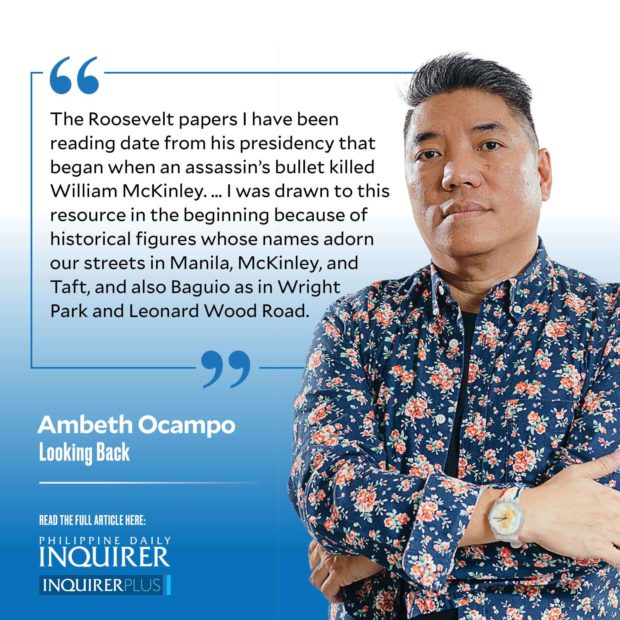Reread the first chapter of Lewis Carroll’s “Alice in Wonderland” recently to get to the source of the phrase “falling into a rabbit hole.” It began with Alice sitting on a riverbank with her sister who was reading from a text-heavy book. Bored, Alice thought: “And what is the use of a book without pictures or conversation?” Then, a white rabbit whizzed past her and she thought she heard it exclaim, “Oh dear! Oh dear! I shall be late!” Alice became curious not because the rabbit talked, but because it checked the time from a watch pulled out from its waist-coat pocket. So, Alice followed it into a rabbit hole and fell into a seemingly endless tunnel. My first reaction to all this was to wonder what Alice was smoking or what pill she popped to end up in Wonderland.
My rabbit hole is the internet, and the one I tumbled into recently is the Theodore Roosevelt Center at Dickinson State University. We all know Roosevelt was the 26th president of the United States who served from 1901-1909. TR is not to be confused with Franklin Delano Roosevelt, 32nd president who served from 1933-1945. Soft stuffed toys in the form of cuddly bears we know today as teddy bears were named after him. During a bear-hunting trip in 1902, well-meaning staff caught a cub, tied it to a tree, and presented the defenseless animal to Roosevelt to be shot. Roosevelt refused. An editorial cartoon on the incident saw print, leading someone to create the first “Teddy’s bear,” then the rest, as they say, is history, and, may I add, it’s not “tsismis.”
When I punched “Philippines” into the Roosevelt Center search engine, it generated 170 pages of linked results to Roosevelt’s papers on the Philippines. According to my teacher, the late Oscar M. Alfonso, who undertook archival research in the US for his book “Theodore Roosevelt and the Philippines” (1970), Roosevelt was a prolific letter writer. An estimated 100,000 letters lie in the Library of Congress, but Roosevelt himself bragged that he wrote over 150,000 letters during his presidency. Therefore, what I found online is not even the tip of the proverbial iceberg. When I began archival and library research in the mid-1980s, a Filipino historian had to go abroad to literally access primary sources for his or her work, but today a lot is available online to jump-start research that will eventually end up in the US and Spanish archives that hold the keys to our past.
The Roosevelt papers I have been reading date from his presidency that began when an assassin’s bullet killed William McKinley. The White House had a staff that took down dictation, typed out handwritten scribblings, filed, and made these papers available in multiple copies using letterpress or carbon paper. Most of the documents are in typescript and, when downloaded, can be magnified to make out erasures or illegible text. Some documents are actually signed by Roosevelt, the others with a printed signature. A handful of letters to the president were scanned from difficult-to-read originals, which makes the various printed compilations of Roosevelt letters an indispensable resource. Roosevelt’s correspondence with his children was published in 1919, a volume of letters to his elder sister Anna (1924), selected correspondence with Henry Cabot Lodge (1925), and the eight-volume compilation of letters by E.E. Morison (1951).
I was drawn to this resource in the beginning because of historical figures whose names adorn our streets in Manila, McKinley, and Taft, and also Baguio as in Wright Park and Leonard Wood Road. While most letters are reports on the military and civil administration of the Philippine Islands, the letters of Wood, for example, reveal that he was more than a colonial administrator but a personal friend of the president who went back to their days as Rough Riders in Cuba during the Spanish-American War. Wood would later see action in the Philippine-American War and serve as governor of the Moro province, providing experience that would come into play when he resigned from the military and served as governor-general of the Philippines from 1921 to his death in 1927.
Roosevelt’s correspondence showed the relationships between the men who figured prominently in the shaping of the early 20th century Philippines. I am still a long way from hitting the bottom of this current internet rabbit hole.
Comments are welcome at aocampo@ateneo.edu
